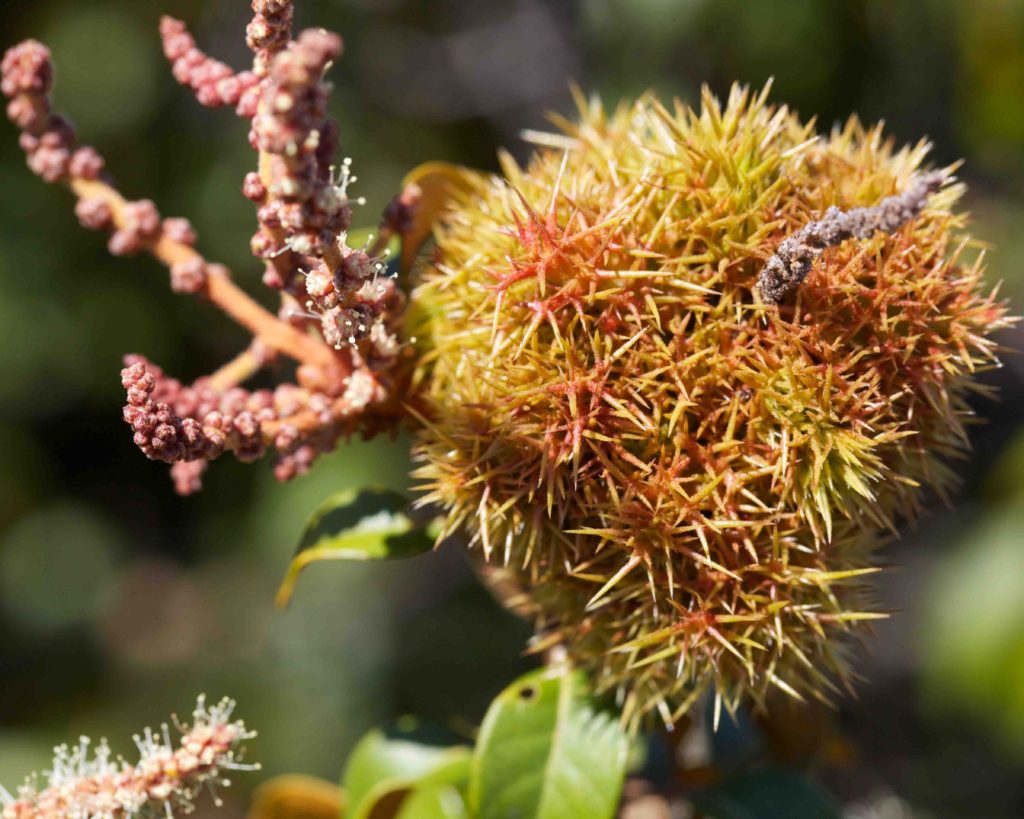Fagaceae: Beech Family — California Tan Oak & Chinquapin
Chinquapin – Chrysolepis chrysophylla var. minor
Height:
< 5 (10) m
Habitat:
Conifer forest, chaparral
Blooms:
June–Sept
Notes:
This is commonly found in both shrubby and tree forms. It is immediately recognizable by its evergreen leaves, dark green above and golden below. The leaves are lanceolate with a long-tapered tip, with margins slightly folded upwards. Flowers are in clusters of elongated spikes. The tree is frequently covered in what may look like 1–2 cm wide round fruits. These are in fact galls, caused by the Chinquapin flower gall wasp (Drocosmos castanopsidis), which injects its eggs in to the tree’s young stems. The tree’s actual fruits are spiny cups, which hold 3 tiny, edible nuts.
California Tan / Tanbark Oak – Notholithocarpus densiflorus var. densiflorus
Height:
< 30 (45) m
Habitat:
Redwood or mixed evergreen forest
Blooms:
June–Oct
Notes:
This was once a common tree, but in recent years its population has been devastated by Sudden Oak Death, an invasive plant pathogen. This may be shrubby and many-stemmed, but is often a tall, single-trunked tree. It has large, distinctive leaves, which are evergreen, simple, alternate, ovate to oblong, 3–14 cm long. The leaves have margins that are either entire or serrated, and an obtuse tip. The tree is monoecious, the tiny white male flowers in more or less erect catkin-like spikes, and the inconspicuous female flowers below the male. Like most black oaks, the acorns mature over two years. The acorns are distinctive, the cup having a soft-spiny appearance, the result of very slender, spreading to reflexed scales. This is quite different from the appressed scales found in true oaks.









